While passing by the Shinkansen ticket gates at Tokyo Station, I noticed a vending machine that didn’t seem to belong there. Strange in this land of vending machines, I know, but something about this machine was different.
I edged in for a closer look and noticed the large LCD panel on the front of the sleek, high-tech machine. Other travelers, too, stopped in their tracks to gawk at the machine and touch it. Could this be a special, new type of vending machine unique to Tokyo Station?
It turns out that these next-generation vending machines have been popping up in Shinagawa, Shinjuku and several other major JR stations since last year. One was even installed in Sendai Station up north.
A long line of soft drinks stretches across the high-intensity LCD touch panel, and at first glance, they look like the drinks in any other vending machine. The fact that everything on display is digital is a bit unsettling at first, but the images are fresh and crisp, and they beckon and tantalize.
The machine handles its own advertising through digital signage and an Internet connection. It is also equipped with a camera that allows it to distinguish the gender and age of anybody who walks by and even to pick one person out of a crowd. These identification features enable the machine to advertise its products in a more targeted manner.
When I walked up to the machine to try and buy a drink, it suggested bottled water and flashed a message about how cold and refreshing my bottle would be. Sure enough, the sparkling, delicious-looking water on the screen made me want to buy bottled water!
Touch an image of a soft drink, and an enlarged image of the drink floats in front of you so you can get a good look at it. Somehow, I doubt that anyone will walk away from this machine with the wrong drink!
Amidst all the wonder, I couldn’t help but think about the implications of advanced technology on everyone’s efforts to conserve electricity. How does digitizing vending machines translate into reducing electricity consumption?
Full of doubt, I contacted JR East Water Business, the company behind the development of these next-generation vending machines, to pose the above question. They answered:
These new vending machines definitely consume more electricity than the old vending machines. However, they stop refrigerating the drinks and turn the LCD panels off at certain times, and their presence means a reduced number of old machines. Overall, electricity consumption is down 25%.
How about that? New technology and more efficient use of power all at once! It also seems that some of the new machines are not being used in efforts to conserve electricity. Hopefully, the new machines break up the pointless clusters of old vending machines we have now.
The company also said that if supplies are not getting through after a large earthquake, the new vending machines will be able to provide drinks at no charge, just as the old vending machines do in those situations now. Of course, that can only happen when power is still running to the machines, and I wondered how effective this benefit really was during the disasters in March.
Power is indeed required for this to happen with the new machines, but their network connection enables them to switch modes automatically, whereas someone has always had to come by and manually change the old vending machines one by one.
JR East is planning on installing 500 of these new-generation vending machines in train stations within the next two years. Anyone who passes through the JR East network will likely have encounters with these convenient machines.

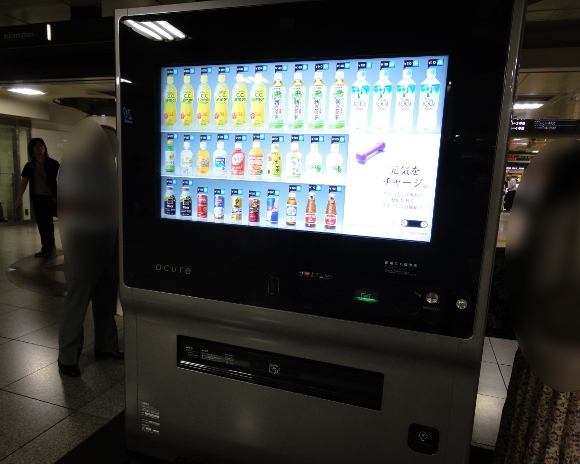
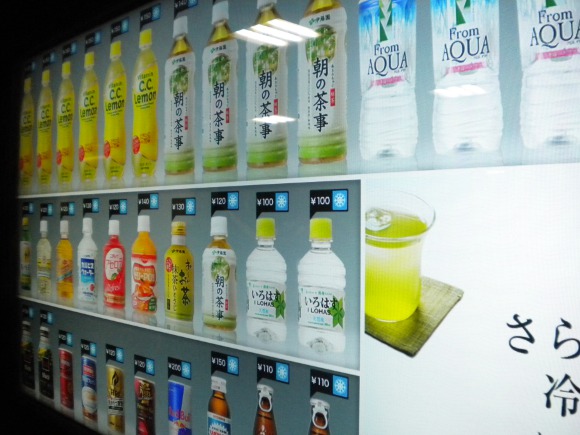
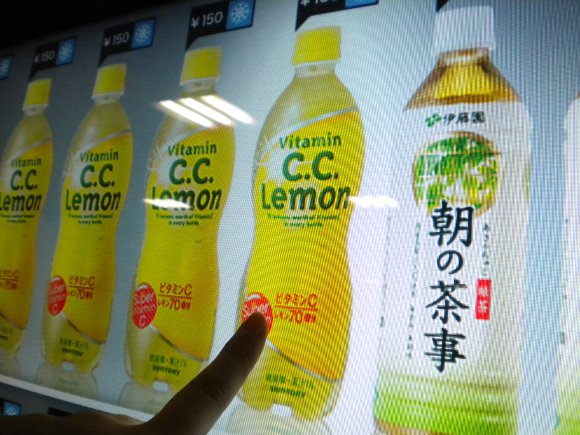
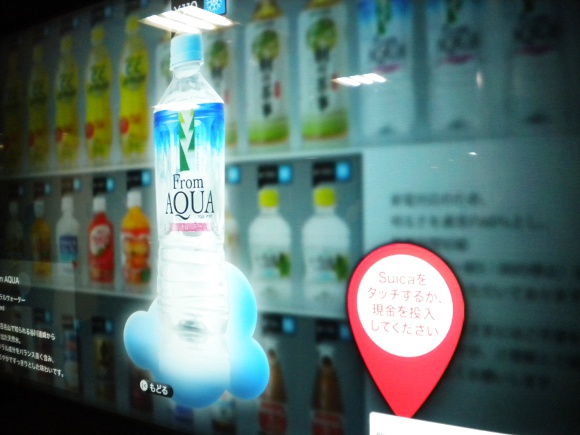
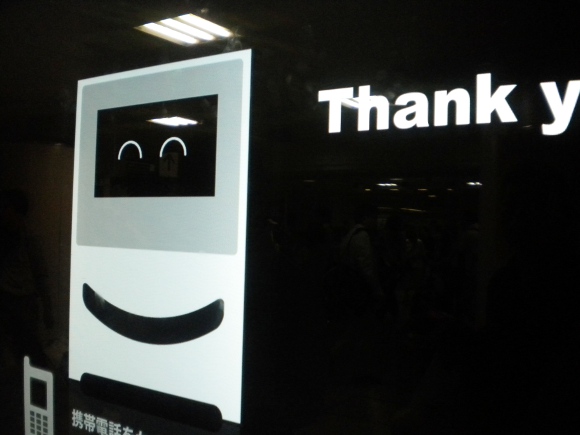
 Send a free drink to a friend with Japan’s newest coinless vending machines【Video】
Send a free drink to a friend with Japan’s newest coinless vending machines【Video】 Japan now has drinkable roasted sweet potato, and it’s practically a dessert in a bottle!
Japan now has drinkable roasted sweet potato, and it’s practically a dessert in a bottle! First-ever foot-operated vending machine appears in Japan during pandemic
First-ever foot-operated vending machine appears in Japan during pandemic Japan’s first beef bowl vending machine goes into service in Tokyo
Japan’s first beef bowl vending machine goes into service in Tokyo Japanese vending machines set to become cooler than ever by selling sub-zero soft drinks
Japanese vending machines set to become cooler than ever by selling sub-zero soft drinks McDonald’s new Happy Meals offer up cute and practical Sanrio lifestyle goods
McDonald’s new Happy Meals offer up cute and practical Sanrio lifestyle goods Studio Ghibli releases new action figures featuring Nausicaä of the Valley of the Wind characters
Studio Ghibli releases new action figures featuring Nausicaä of the Valley of the Wind characters Studio Ghibli glasses cases let anime characters keep an eye on your spectacles
Studio Ghibli glasses cases let anime characters keep an eye on your spectacles All-you-can-drink Starbucks and amazing views part of Tokyo’s new 170 meter-high sky lounge
All-you-can-drink Starbucks and amazing views part of Tokyo’s new 170 meter-high sky lounge We try out “Chan Ramen”, an underground type of ramen popular in the ramen community
We try out “Chan Ramen”, an underground type of ramen popular in the ramen community Katsudon vs. tonkatsu vs. katsu sandwich – What’s the best way to eat pork cutlet in Japan?
Katsudon vs. tonkatsu vs. katsu sandwich – What’s the best way to eat pork cutlet in Japan? McDonald’s Japan releases a pancake pie for new retro kissaten coffeeshop series
McDonald’s Japan releases a pancake pie for new retro kissaten coffeeshop series The oldest tunnel in Japan is believed to be haunted, and strange things happen when we go there
The oldest tunnel in Japan is believed to be haunted, and strange things happen when we go there Drawing a school girl leaping over a man firing a gun? There’s a reference book for that!
Drawing a school girl leaping over a man firing a gun? There’s a reference book for that! Our reporter takes her 71-year-old mother to a visual kei concert for the first time
Our reporter takes her 71-year-old mother to a visual kei concert for the first time More foreign tourists than ever before in history visited Japan last month
More foreign tourists than ever before in history visited Japan last month Disney princesses get official manga makeovers for Manga Princess Cafe opening in Tokyo
Disney princesses get official manga makeovers for Manga Princess Cafe opening in Tokyo Starbucks reopens at Shibuya Scramble Crossing with new look and design concept
Starbucks reopens at Shibuya Scramble Crossing with new look and design concept Beautiful new Final Fantasy T-shirt collection on the way from Uniqlo【Photos】
Beautiful new Final Fantasy T-shirt collection on the way from Uniqlo【Photos】 Is the new Shinkansen Train Desk ticket worth it?
Is the new Shinkansen Train Desk ticket worth it? Foreign English teachers in Japan pick their favorite Japanese-language phrases【Survey】
Foreign English teachers in Japan pick their favorite Japanese-language phrases【Survey】 Beautiful Sailor Moon manhole cover coasters being given out for free by Tokyo tourist center
Beautiful Sailor Moon manhole cover coasters being given out for free by Tokyo tourist center Studio Ghibli releases Kiki’s Delivery Service chocolate cake pouches in Japan
Studio Ghibli releases Kiki’s Delivery Service chocolate cake pouches in Japan Japan’s bone-breaking and record-breaking roller coaster is permanently shutting down
Japan’s bone-breaking and record-breaking roller coaster is permanently shutting down New definition of “Japanese whiskey” goes into effect to prevent fakes from fooling overseas buyers
New definition of “Japanese whiskey” goes into effect to prevent fakes from fooling overseas buyers Our Japanese reporter visits Costco in the U.S., finds super American and very Japanese things
Our Japanese reporter visits Costco in the U.S., finds super American and very Japanese things Studio Ghibli unveils Mother’s Day gift set that captures the love in My Neighbour Totoro
Studio Ghibli unveils Mother’s Day gift set that captures the love in My Neighbour Totoro Domino’s Japan now sells…pizza ears?
Domino’s Japan now sells…pizza ears? New Japanese KitKat flavour stars Sanrio characters, including Hello Kitty
New Japanese KitKat flavour stars Sanrio characters, including Hello Kitty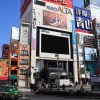 One of Tokyo’s most famous meeting-spot landmarks is closing for good
One of Tokyo’s most famous meeting-spot landmarks is closing for good Kyoto creates new for-tourist buses to address overtourism with higher prices, faster rides
Kyoto creates new for-tourist buses to address overtourism with higher prices, faster rides Sales of Japan’s most convenient train ticket/shopping payment cards suspended indefinitely
Sales of Japan’s most convenient train ticket/shopping payment cards suspended indefinitely Sold-out Studio Ghibli desktop humidifiers are back so Totoro can help you through the dry season
Sold-out Studio Ghibli desktop humidifiers are back so Totoro can help you through the dry season Japanese government to make first change to romanization spelling rules since the 1950s
Japanese government to make first change to romanization spelling rules since the 1950s Ghibli founders Toshio Suzuki and Hayao Miyazaki contribute to Japanese whisky Totoro label design
Ghibli founders Toshio Suzuki and Hayao Miyazaki contribute to Japanese whisky Totoro label design Doraemon found buried at sea as scene from 1993 anime becomes real life【Photos】
Doraemon found buried at sea as scene from 1993 anime becomes real life【Photos】 Tokyo’s most famous Starbucks is closed
Tokyo’s most famous Starbucks is closed One Piece characters’ nationalities revealed, but fans have mixed opinions
One Piece characters’ nationalities revealed, but fans have mixed opinions We asked a Uniqlo employee what four things we should buy and their suggestions didn’t disappoint
We asked a Uniqlo employee what four things we should buy and their suggestions didn’t disappoint Princesses, fruits, and blacksmiths: Study reveals the 30 most unusual family names in Japan
Princesses, fruits, and blacksmiths: Study reveals the 30 most unusual family names in Japan Snow in Japan turns vending machine into ice-cold gacha game
Snow in Japan turns vending machine into ice-cold gacha game Japanese drink vending machine capsule toys: A must-have for recreating Japan in miniature
Japanese drink vending machine capsule toys: A must-have for recreating Japan in miniature To prevent heatstroke and COVID-19, Ibaraki vending machines dispense free cold water to students
To prevent heatstroke and COVID-19, Ibaraki vending machines dispense free cold water to students Sushi from a vending machine — would you try it? Mr. Sato did
Sushi from a vending machine — would you try it? Mr. Sato did Yes! Ramen soup in heated cans coming to Japanese vending machines and convenience stores
Yes! Ramen soup in heated cans coming to Japanese vending machines and convenience stores Some of Japan’s most iconic vending machines will soon be no more
Some of Japan’s most iconic vending machines will soon be no more Company president motivates employees via vending machine with personalised messages
Company president motivates employees via vending machine with personalised messages Japan’s newest vending machine absorbs CO2 from the environment
Japan’s newest vending machine absorbs CO2 from the environment The most vandalised vending machines in Japan? We check out a grungy duo at America Village
The most vandalised vending machines in Japan? We check out a grungy duo at America Village We try fresh orange juice squeezed for us by a vending machine in Saitama【Taste test】
We try fresh orange juice squeezed for us by a vending machine in Saitama【Taste test】 Aged vending machine in Tokyo appears to sell stag beetles
Aged vending machine in Tokyo appears to sell stag beetles Try-your-luck vending machine proves it doesn’t always pay to take a gamble
Try-your-luck vending machine proves it doesn’t always pay to take a gamble Vending machine makes commuters smile at Japanese train station
Vending machine makes commuters smile at Japanese train station Creative problem solving: Vending machine dispenses cans with 5 yen coins taped to them
Creative problem solving: Vending machine dispenses cans with 5 yen coins taped to them Vending machine noodle ice cream: A retro icon in Japan brings joy to a new generation
Vending machine noodle ice cream: A retro icon in Japan brings joy to a new generation Japan gears up for foreign visitors with new interactive vending machine
Japan gears up for foreign visitors with new interactive vending machine
Leave a Reply